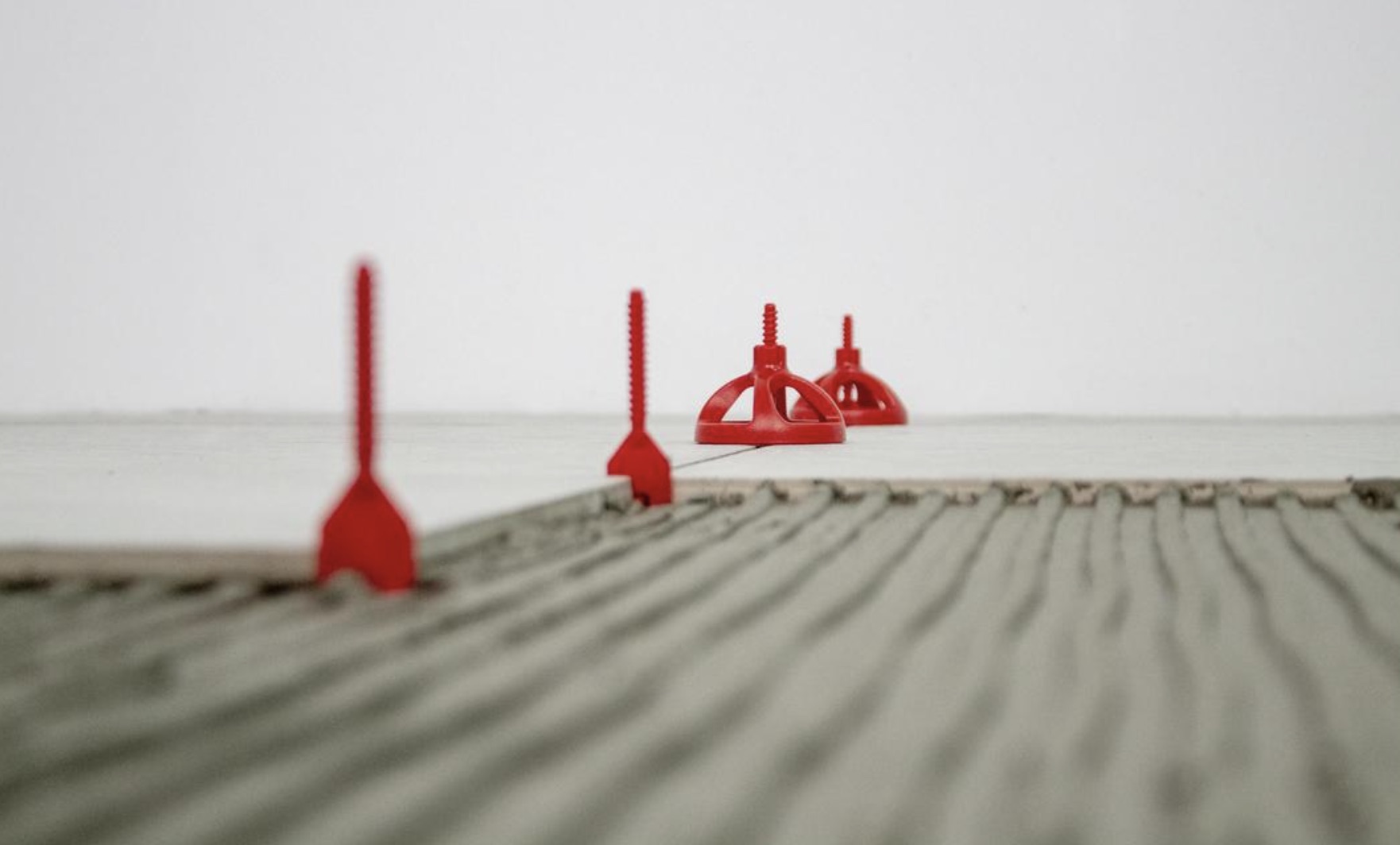Tile installers face a lot of challenges on the job site – particularly with remodeling projects where surfaces are often not flat, square or level. Add in the need for waterproof underlayment, varying substrates and complex designs and the job can turn into a headache. However, all of those elements are invisible to the customer.
 Customers focus on what’s visible: even grout lines, accurate spacing and, most importantly, level tiles. When lippage is visible (the vertical difference between two adjacent tiles), the job looks bad, and can even create tripping hazards in floor tiles. The good news is today’s installers have a secret weapon in their bag of tricks – tile leveling systems.
Customers focus on what’s visible: even grout lines, accurate spacing and, most importantly, level tiles. When lippage is visible (the vertical difference between two adjacent tiles), the job looks bad, and can even create tripping hazards in floor tiles. The good news is today’s installers have a secret weapon in their bag of tricks – tile leveling systems.
When used correctly, tile leveling systems eliminate lippage while speeding up installs. That means the job looks great, and the tile setters can work more efficiently. There are a variety of leveling options, but one the pros turn to again and again is the Rubi Cyclone system because it is easy-to-use and intuitive for tile installers, even those new to the business. This is particularly helpful because newer installers don’t have the experience and skill needed for some of the more complex leveling systems, so the Rubi Cyclone helps ensure jobs look great, even with novice setters.
The Cyclone system uses a large, round base and reusable threaded hoods that are tightened manually, so there’s no need for additional tools. It also has visibility to see if there is excess adhesive and to check on positioning between the tiles. It comes in multiple size configurations for large format tiles.
Regardless of what tile leveling system you choose, there’s no doubt that levelers are a game changer for flooring contractors, resulting in happier customers, faster install jobs and a reputation for great looking tile jobs. You can learn more about the Rubi Cyclone system and shop the options, here.
